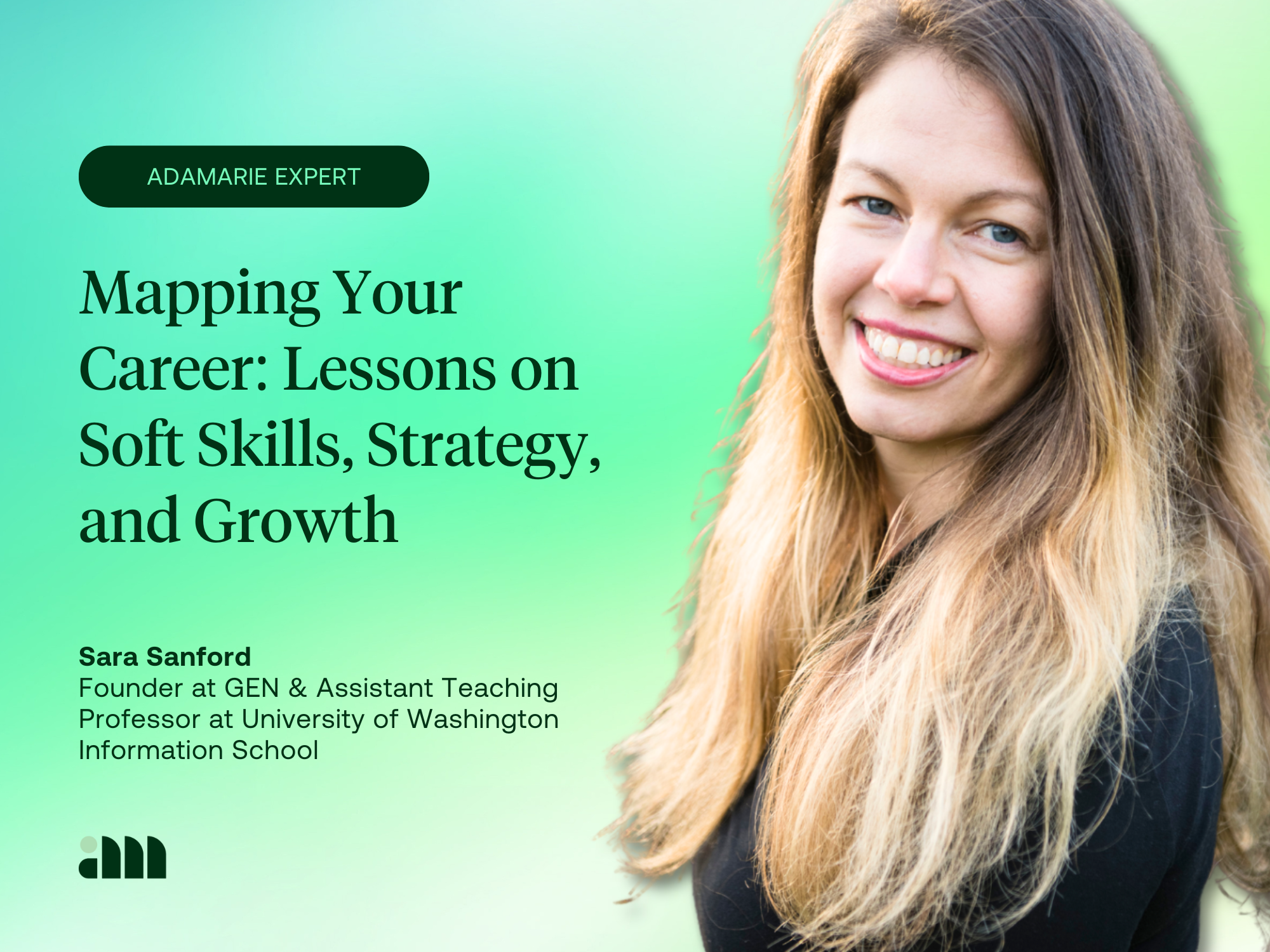Mapping Your Career: Lessons from Sara Sanford on Soft Skills, Strategy, and Growth
Navigating your career path in today’s fast-changing job market can feel overwhelming, especially early on. Titles, technical skills, and formal credentials are important, but as Sara Sanford highlighted in her recent Career Mapping session, the real game-changers often lie in soft skills, strategic thinking, and intentional relationship-building.
Check out these key takeaways from Sara’s session that every early- and mid-career professional should know.
1. Soft Skills Are the New Technical Skills
Contrary to common belief, organizations aren’t just looking for coders, engineers, or specialists—they’re looking for people who can listen, communicate, and navigate complex environments. Sara emphasized:
“Not a single hiring manager, recruiter, C-suite, VP has come to me and said ‘Sara, we need more coders.’ They all say we need people who have the core soft skills.”
Communication, empathy, and management abilities—like understanding constraints while maintaining vision—are in high demand. These are the skills that allow professionals to become effective conduits, liaisons, and leaders within any organization.
2. Map Your Skills Strategically
Career mapping isn’t about reinventing yourself; it’s about translating what you already know into what organizations need. Sara shared:
“The trick is making sure that you translate what you have done in the past to the core skills that all organizations are desperate for.”
Start by inventorying your current skills. How can they align with what managers are looking for? And don’t fixate too much on titles—sometimes the job you want in the future doesn’t even exist yet, but the skills required for that role are evergreen.
3. Start Building Relationships Early
Networking isn’t just a tool for landing your next role—it’s an ongoing process that should begin long before you apply for jobs. Sara advised:
“Start earlier than you think you need to with building relationships. When you’re applying for jobs, you’re too late to start building those relationships.”
Engage in informational interviews, connect with people in as many organizations as possible, and treat your networking efforts like investigative research into the reality of your industry.
4. Take Advantage of Every Opportunity to Stand Out
Even in virtual-heavy industries, there are ways to distinguish yourself:
“If there is an option to be in-person when everything else is virtual—you will stand out.”
Additionally, asking about promotion paths shows employers that you’re thinking long-term and committed to growth.
5. Understand the Hiring Landscape
Job boards and hiring agencies are more than just places to submit resumes—they’re tools to understand where opportunities actually exist. Companies invest in these channels, meaning posted roles reflect real openings. Agencies also provide valuable feedback that can help you fine-tune your applications and approach.
6. Recognize Undervalued Skills
Sara highlighted an important equity insight:
“Underestimated skills are overrepresented in underrepresented groups.”
Be confident in the value of your experience and know how to communicate it effectively. Often, the skills you already possess are exactly what organizations are desperate to find.
7. Treat Your Career Like a Map, Not a Ladder
Career mapping involves two key components:
Identify gaps: What skills or experiences do you still need to reach your next goal?
Translate experience: How can your past achievements demonstrate core skills employers value?
By focusing on skills over titles, building authentic relationships, and understanding the real-world demands of your industry, you create a flexible, resilient roadmap for your career.
Sara Sanford’s session reminds us that career growth isn’t just about technical expertise—it’s about strategic skill translation, networking, and intentional planning.
These insights can help you navigate change, stand out to employers, and chart a path that aligns with both your goals and the evolving needs of STEM industries.

